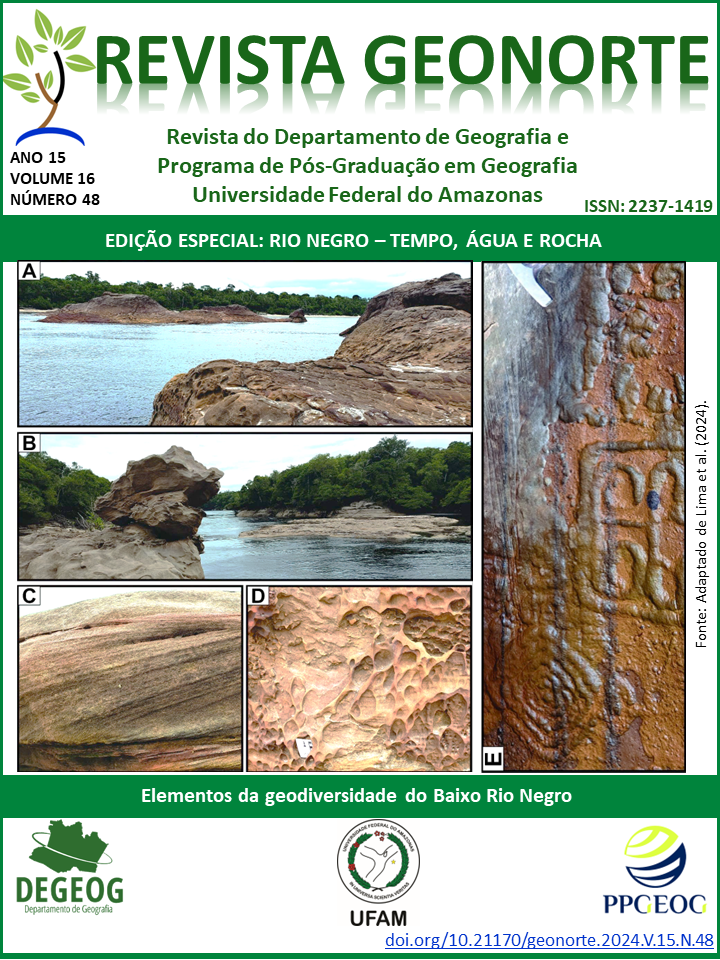CARACTERIZAÇÃO MULTITEMPORAL DE BARRAS FLUVIAIS NO ARQUIPÉLAGO DE MARIUÁ, MÉDIO RIO NEGRO , AMAZONAS
DOI:
https://doi.org/10.21170/geonorte.2024.V.15.N.48.147.165Keywords:
Geomorfologia fluvial, barras e ilhas, Sedimentação e erosão, Bacia do rio Negro, Sensoriamento remotoAbstract
This work presents the morphological evolution of sandbars in the western portion of the Mariuá Archipelago, Rio Negro mid-course. Although this archipelago is considered the largest on the planet, studies regarding the last phase of sedimentation of the islands and bars are still scarce, mainly related to erosion and sedimentation processes. Remote sensing tools were used, through the multitemporal analysis of Landsat images, to understand the morphological evolution of the sandbars in the time interval of 31 years (1985-1997-2016). In the first stage (1985-1997) the erosion rate was higher than the deposition rate, while in the second stage (1997-2016) the accretionary depositional dynamics predominated, both related to the variation in the sedimentary input. From the results obtained, an increase or decrease of this contribution was observed and can be related to the morphological changes of the sandbars, as well as to the periods of greater and lesser precipitation, which reflect the characteristics of the El Nino and La Nina phenomena in the Amazon. Particularly, the relationship of the increase in the sedimentary input, indicated by the suspended sediment load, solid discharge and multitemporal analysis of the bars, with the La Nina phenomenon, which influenced the increase in the precipitation rate in the Basin can be observed. of the Rio Negro. Despite the multitemporal analysis of the bars indicating a recent and short time interval (31 years), the results obtained by dating by Optically Stimulated Luminescence indicate that the sedimentation of the bars began at least five (05) centuries ago.
Downloads
Downloads
Published
How to Cite
Issue
Section
License
Autores que publicam nesta revista concordam com os seguintes termos:
- Autores mantém os direitos autorais e concedem à revista o direito de primeira publicação, com o trabalho simultaneamente licenciado sob a Licença Creative Commons Attribution que permite o compartilhamento do trabalho com reconhecimento da autoria e publicação inicial nesta revista.
- Autores têm autorização para assumir contratos adicionais separadamente, para distribuição não-exclusiva da versão do trabalho publicada nesta revista (ex.: publicar em repositório institucional ou como capítulo de livro), com reconhecimento de autoria e publicação inicial nesta revista.
- Autores têm permissão e são estimulados a publicar e distribuir seu trabalho online (ex.: em repositórios institucionais ou na sua página pessoal) a qualquer ponto antes ou durante o processo editorial, já que isso pode gerar alterações produtivas, bem como aumentar o impacto e a citação do trabalho publicado (Veja O Efeito do Acesso Livre).






